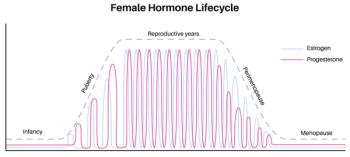
Iron Deficiency: Treatment of Patients Intolerant of Oral Iron
What's the best way to treat iron deficiency in patients who are unable to tolerate oral iron?
What's the best way to treat iron deficiency in patients who are unable to tolerate oral iron?
Black stools, diarrhea, constipation, nausea, vomiting, and abdominal discomfort lead the long list of adverse effects of oral iron. One option is to infuse parenteral iron, but this is cumbersome and more expensive, and may cause anaphylaxis. Should we just let our patients tolerate iron deficiency and the resultant anemia? A recent Israeli study found a better alternative.
LOWER MAY BE BETTER
Rimon and coworkers1 identified iron deficiency in elderly patients by the optimal method, a decreased ferritin level (less than 40 ng/mL). Remember that measurements of iron and iron-binding capacity are limited in diagnostic accuracy by a less than 40% sensitivity and specificity in patients with iron deficiency.2 Patients without iron deficiency were included as controls.
The investigatorscompared the "gold standard" of oral iron replacement (150 mg/d of elemental iron) with lower dosages (15 or 50 mg/d). They assessed iron absorption (beginning at 2 hours after the initial dose), reticulocyte response, and hemoglobin and ferritin levels during treatment.
The absorption of low-dose iron (15 mg/d) was rapid and efficient in the patients with iron deficiency. This dosage raised ferritin and hemoglobin levels as effectively as the higher dosages. These results are bolstered by those of another study that showed that anemia in pregnant women can be successfully treated with 20 mg/d of oral iron.3
Rimon and colleagues1 also demonstrated that the adverse effects of oral iron replacement are dose-dependent. The incidence of abdominal discomfort, diarrhea, constipation, and black stools was significantly reduced at lower dosages.
A CAVEAT
The investigators caution that low-dose therapy is not appropriate for patients who have malabsorption. Thus, documenting a response to therapy (with markers such as hemoglobin and ferritin) is essential. Also, the cause of iron deficiency must be identified.
IMPLICATIONS FOR YOUR PRACTICE
A significantly lower dosage of oral iron (10% of what has been previously recommended) can replenish iron stores and raise hemoglobin levels. The bonus is a sharp reduction in the adverse effects that occur at higher doses, with no sacrifice in efficacy.
References:
REFERENCES:
1.
Rimon E, Kagansky N, Kagansky M, et al. Are we giving too much iron? Low-dose iron therapy is effective in octogenarians.
Am J Med.
2005;118:1142-1147.
2.
Bergin JJ. Anemia: a strategy for the workup.
Consultant.
2002;42:869-882.
3.
Makrides M, Crowther CA, Gibson RA, et al. Efficacy and tolerability of low-dose iron supplements during pregnancy: a randomized controlled trial.
Am J Clin Nutr.
2003;78:145-153.
Newsletter
Enhance your clinical practice with the Patient Care newsletter, offering the latest evidence-based guidelines, diagnostic insights, and treatment strategies for primary care physicians.

























































































































































































































































































